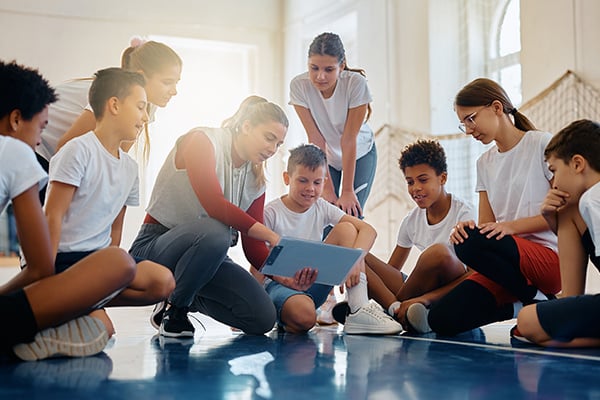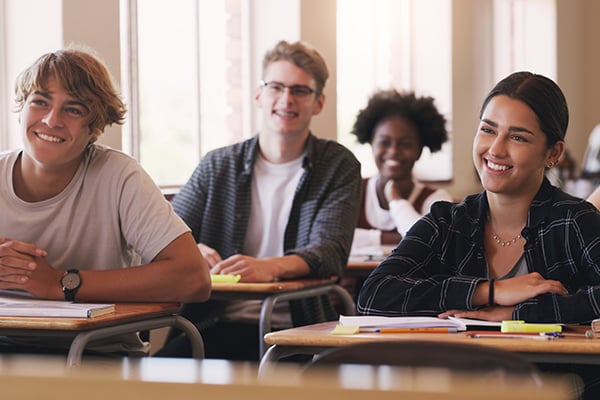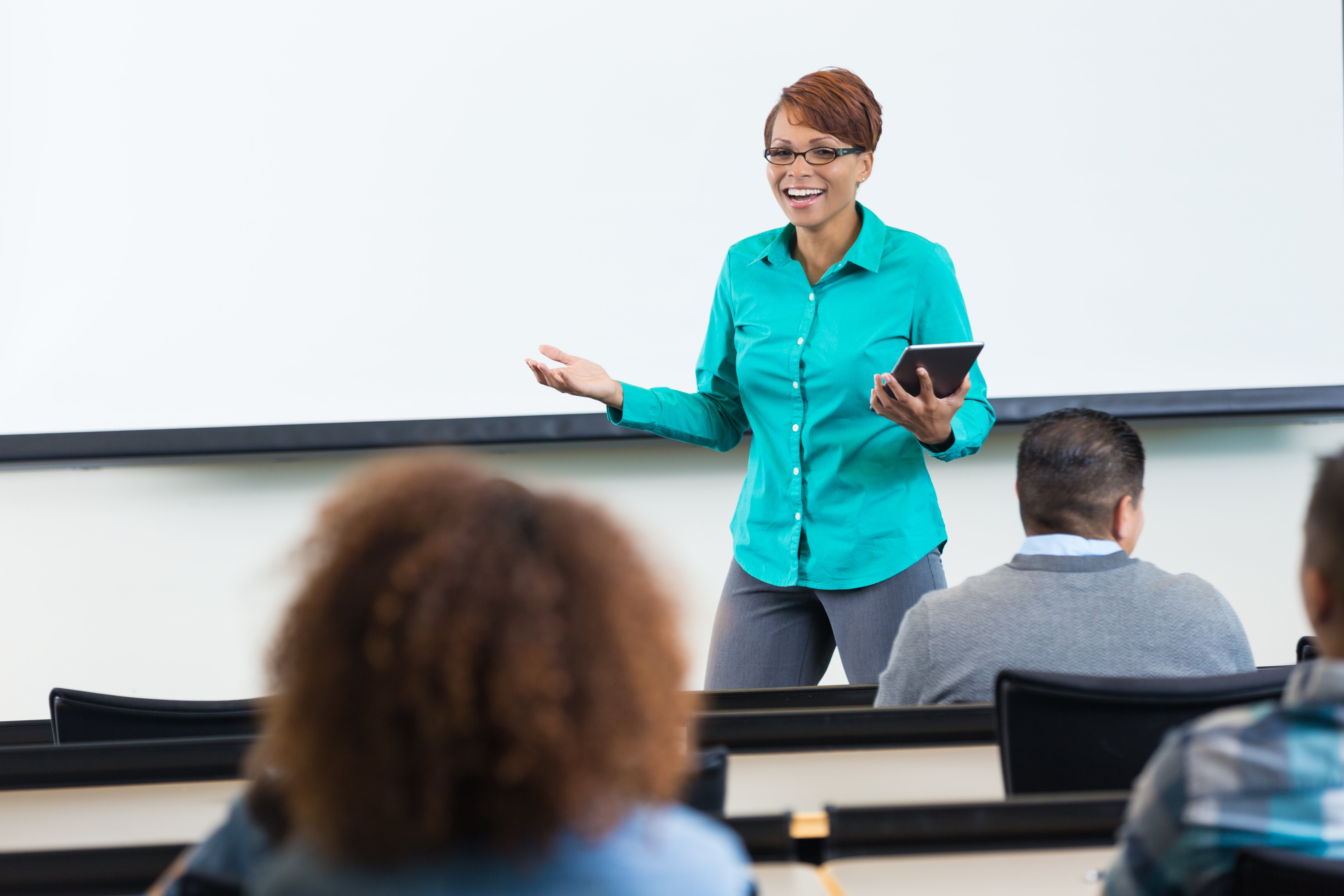Creating a positive educational environment that garners respect from colleagues and students alike is essential for PE teachers. Be the voice of PE and share the good that PE does:
- Increases academic achievement
- Decreases behavioral issues
- Promotes social and emotional wellness
- Supports cross-curricular skills.
These efforts not only enhance the educational experience for students but also build a supportive and respected presence within the school.
Reach Beyond the Classroom
One effective way for PE teachers to gain respect within their school building and among other teachers is by reaching beyond the classroom and thinking outside the gym. This can be achieved by incorporating various activities over the course of the school day:
- Volunteer to manage student activity time, mindfulness stretching, or backyard games.

- Organize intramurals or clubs, staff wellness challenges, and parent engagement activities to foster a sense of community and collaboration.
- Lead professional development (PD) or staff meeting activities, such as transition energizers, team-building exercises, and kinesthetic learning, to further demonstrate the value of physical education.
By engaging in these initiatives, PE teachers can showcase their versatility and commitment to the overall well-being and development of students and staff alike.
Expand Questioning Techniques
Another way for PE teachers to gain respect within their school building and among other teachers is by expanding their questioning techniques to enhance student engagement and understanding.
- Incorporate strategies such as "Do Now" or bell ringers at the beginning of class and use exit tickets at the end to effectively check for understanding and ensure students are grasping key concepts.
- Utilize tools and methods commonly used by other teachers, such as Plickers for quick assessments, debrief activities to reflect on lessons, and interactive techniques like Think-Pair-Share and Walk and Talk, to create a more cohesive learning environment throughout the school building.
- Leverage technology with Google Forms for quizzes and feedback to streamline the assessment process.
By adopting these questioning techniques, PE teachers can align their practices with those of their colleagues, demonstrating their commitment to educational excellence and fostering a collaborative atmosphere.
Strive for Different
PE teachers should avoid the "this is how it’s always been done" mentality and embrace change.
- Start by rethinking how you begin your classes, whether it's taking attendance or conducting warm-ups, and consider varying the length of units and the activities you teach.
- Challenge yourself to step out of your comfort zone by adopting grading practices that are fair and equitable and assess learning in diverse ways beyond just physical skills.
- Regularly survey students to gather their perspectives on how you can enhance their experience, using tools like Google Forms, reflections, and conversations.
By continuously seeking improvement and being open to new methods, PE teachers can demonstrate their dedication to providing a dynamic and inclusive learning environment.
Purposeful PE
Make your lessons purposeful and interdisciplinary.
- Incorporate subjects like math, English, and science into your physical education curriculum to create a more holistic learning experience. For example, you can integrate math by having students calculate their heart rates, use English skills in writing reflections on their activities, or explore scientific concepts through fitness and health education.
- Try to infuse school-wide professional development (PD) themes into your lessons, aligning your teaching with broader educational goals and initiatives.
By demonstrating the relevance of physical education to other academic areas and contributing to school-wide objectives, you can highlight the importance of PE and earn greater respect from your colleagues.
Evaluate Learning
Using data-driven instruction in PE is vital for tailoring activities and lessons to meet the diverse needs of all students. By analyzing data on student performance, fitness levels, and learning styles, PE teachers can create more effective and personalized lesson plans. This approach acknowledges that students do not all learn the same way and allows for adjustments that can enhance engagement and outcomes. Data-driven instruction helps ensure that every student receives the support they need to succeed, fostering a more inclusive and effective physical education environment.
Build Content Knowledge
Incorporating content knowledge into PE lesson plans is crucial for fostering a comprehensive understanding of physical health and fitness among students. By integrating concepts such as anatomy, physiology, nutrition, and the principles of exercise, PE teachers can provide students with the knowledge they need to make informed decisions about their health. This approach not only enhances students' physical skills but also promotes lifelong healthy habits, critical thinking, and a deeper appreciation for the science behind physical activity. Ultimately, it equips students with the tools to lead healthier, more active lives.
Teach Terminology
Teaching terminology in PE activities and lessons is essential for several reasons.
- It helps students understand and communicate effectively about physical activities, fostering a deeper comprehension of the exercises and their benefits.
- Knowing the correct terms also enhances students' ability to follow instructions accurately and safely.
- Additionally, it builds a foundation of knowledge that students can carry into other areas of their education and daily lives, promoting lifelong fitness literacy and confidence in discussing health and fitness topics.

In summary, by adopting innovative approaches and fostering a collaborative atmosphere, PE teachers can significantly enhance their recognition and support within the school community. Integrating academic content, utilizing data-driven instruction, and employing effective communication techniques can transform physical education into a key component of holistic student development. By continually seeking improvement and showcasing the diverse benefits of physical education, teachers can build a culture of respect and appreciation for their essential role in promoting students' overall well-being and success.
 Interested in a comprehensive PE curriculum that builds respect, strives to be different, is purposeful, and teaches content, terminology, and much more? Request a free preview of Fitness and Wellness Skills to see how to build a comprehensive fitness program that does all of that. Learn more at www.g-w.com/health-pe.
Interested in a comprehensive PE curriculum that builds respect, strives to be different, is purposeful, and teaches content, terminology, and much more? Request a free preview of Fitness and Wellness Skills to see how to build a comprehensive fitness program that does all of that. Learn more at www.g-w.com/health-pe.





